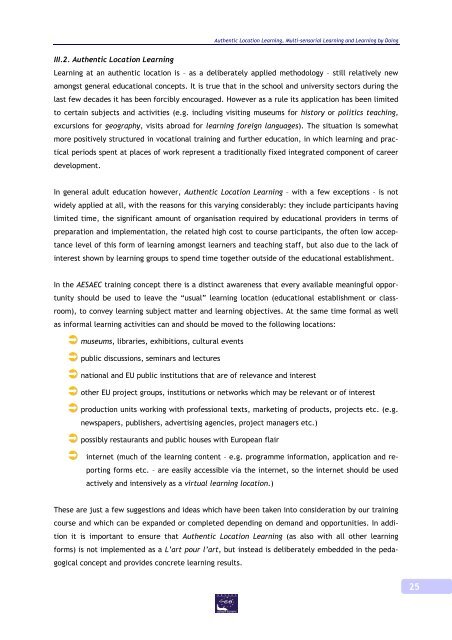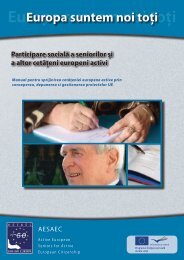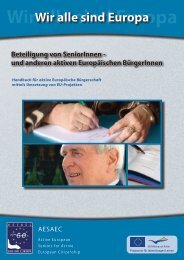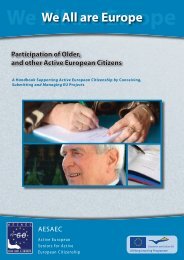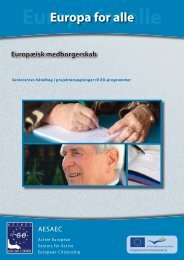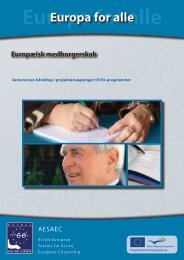We All are Europe - AESAEC
We All are Europe - AESAEC
We All are Europe - AESAEC
You also want an ePaper? Increase the reach of your titles
YUMPU automatically turns print PDFs into web optimized ePapers that Google loves.
Authentic Location Learning, Multi-sensorial Learning and Learning by Doing<br />
III.2. Authentic Location Learning<br />
Learning at an authentic location is – as a deliberately applied methodology – still relatively new<br />
amongst general educational concepts. It is true that in the school and university sectors during the<br />
last few decades it has been forcibly encouraged. However as a rule its application has been limited<br />
to certain subjects and activities (e.g. including visiting museums for history or politics teaching,<br />
excursions for geography, visits abroad for learning foreign languages). The situation is somewhat<br />
more positively structured in vocational training and further education, in which learning and practical<br />
periods spent at places of work represent a traditionally fixed integrated component of c<strong>are</strong>er<br />
development.<br />
In general adult education however, Authentic Location Learning – with a few exceptions – is not<br />
widely applied at all, with the reasons for this varying considerably: they include participants having<br />
limited time, the significant amount of organisation required by educational providers in terms of<br />
preparation and implementation, the related high cost to course participants, the often low acceptance<br />
level of this form of learning amongst learners and teaching staff, but also due to the lack of<br />
interest shown by learning groups to spend time together outside of the educational establishment.<br />
In the <strong>AESAEC</strong> training concept there is a distinct aw<strong>are</strong>ness that every available meaningful opportunity<br />
should be used to leave the “usual” learning location (educational establishment or classroom),<br />
to convey learning subject matter and learning objectives. At the same time formal as well<br />
as informal learning activities can and should be moved to the following locations:<br />
museums, libraries, exhibitions, cultural events<br />
public discussions, seminars and lectures<br />
national and EU public institutions that <strong>are</strong> of relevance and interest<br />
other EU project groups, institutions or networks which may be relevant or of interest<br />
production units working with professional texts, marketing of products, projects etc. (e.g.<br />
newspapers, publishers, advertising agencies, project managers etc.)<br />
possibly restaurants and public houses with <strong>Europe</strong>an flair<br />
internet (much of the learning content – e.g. programme information, application and reporting<br />
forms etc. – <strong>are</strong> easily accessible via the internet, so the internet should be used<br />
actively and intensively as a virtual learning location.)<br />
These <strong>are</strong> just a few suggestions and ideas which have been taken into consideration by our training<br />
course and which can be expanded or completed depending on demand and opportunities. In addition<br />
it is important to ensure that Authentic Location Learning (as also with all other learning<br />
forms) is not implemented as a L’art pour l’art, but instead is deliberately embedded in the pedagogical<br />
concept and provides concrete learning results.<br />
25


